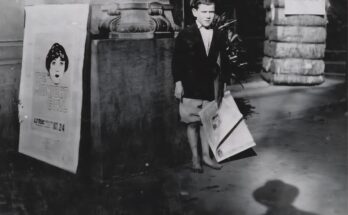In 2019, a university in Japan witnessed an extraordinary moment that merged ancient ninja traditions with modern academic ingenuity. A history student at Mie University, known for her passion for Japan’s feudal era, handed in what appeared to be a blank sheet of paper for her term essay on ninja history. At first glance, her professor was puzzled and even considered the possibility of a submission error. However, a small note she attached to the paper requested the professor to apply heat if he wished to read her essay. Intrigued, he followed her instructions—and was astonished as her writing slowly appeared on the page, as if summoned by magic.
The invisible ink she used wasn’t the product of a modern chemical lab, but rather a replication of a technique that was reportedly used by ninjas over 1,000 years ago. This ancient method involved crushing soybeans and mixing them with water to create a heat-sensitive ink. The ink is invisible when dry but becomes visible when exposed to a gentle heat source, such as the warmth of a hand or the surface of a hot iron. The student had studied these techniques as part of her course, and instead of simply describing them in her essay, she decided to demonstrate them—bringing history to life in the most literal sense.
This bold move was more than just a clever trick; it was a demonstration of deep understanding and respect for the subject matter. The student’s creativity not only showcased her knowledge of the history and methods of the ninja, but it also demonstrated her appreciation for the philosophical and practical aspects of ninjutsu. Ninjas, or shinobi, were known not only for their espionage and stealth but also for their ability to blend seamlessly into their surroundings and adapt with resourcefulness. By using their techniques in her academic work, the student embodied the very principles she was writing about.
The technique she used has been historically documented in ninja manuals such as the Bansenshukai, a 17th-century compendium of ninja knowledge. These texts detailed various ways to communicate secretly, avoid detection, and pass along messages under enemy scrutiny. Invisible ink made from natural ingredients like soybean extract, rice water, and other organic compounds was a key part of their toolkit. These messages would remain hidden until exposed to fire, friction, or heat—making them ideal for covert communication in a time of political intrigue and warfare.
What made the student’s approach even more impressive was the precision and care required to write with such ink. The viscosity of the crushed soybean liquid and the need for exact application would have made the writing process slow and meticulous. It’s a technique that demands patience, skill, and a steady hand—not unlike the stealthy movements of the ninjas themselves. The student had to be sure that her essay was legible once revealed, while also ensuring that it remained completely invisible upon submission.
The professor, Mr. Yuji Yamada, a historian of ninjutsu and Japanese military traditions, was deeply impressed. Not only did he appreciate the historical authenticity of her method, but he also recognized the courage it took to submit an “invisible” essay in an academic setting. It was a gamble that could have gone very wrong had the ink not revealed properly, or if the professor had not followed the instructions. But the successful outcome made the effort worthwhile, and the student was awarded an A for her originality, depth of research, and demonstration of historical technique.
The story quickly went viral across Japan and internationally, drawing admiration from educators, historians, and fans of ninja culture alike. Many saw it as a reminder that history isn’t just something to be memorized from textbooks—it’s a living, breathing subject that can be engaged with in creative and meaningful ways. The student’s essay wasn’t just about ninjas; it was a modern act of ninja-style communication itself, connecting centuries-old traditions to the contemporary classroom.
Ultimately, this episode serves as a powerful example of how education can thrive when students are encouraged to think beyond conventional boundaries. By combining rigorous scholarship with imaginative expression, the student paid tribute to the past while creating something entirely original in the present. Her invisible ink may have faded after its brief moment in the heat, but the impression it left on the academic world—and on the imagination of all who heard the story—remains vividly visible.


